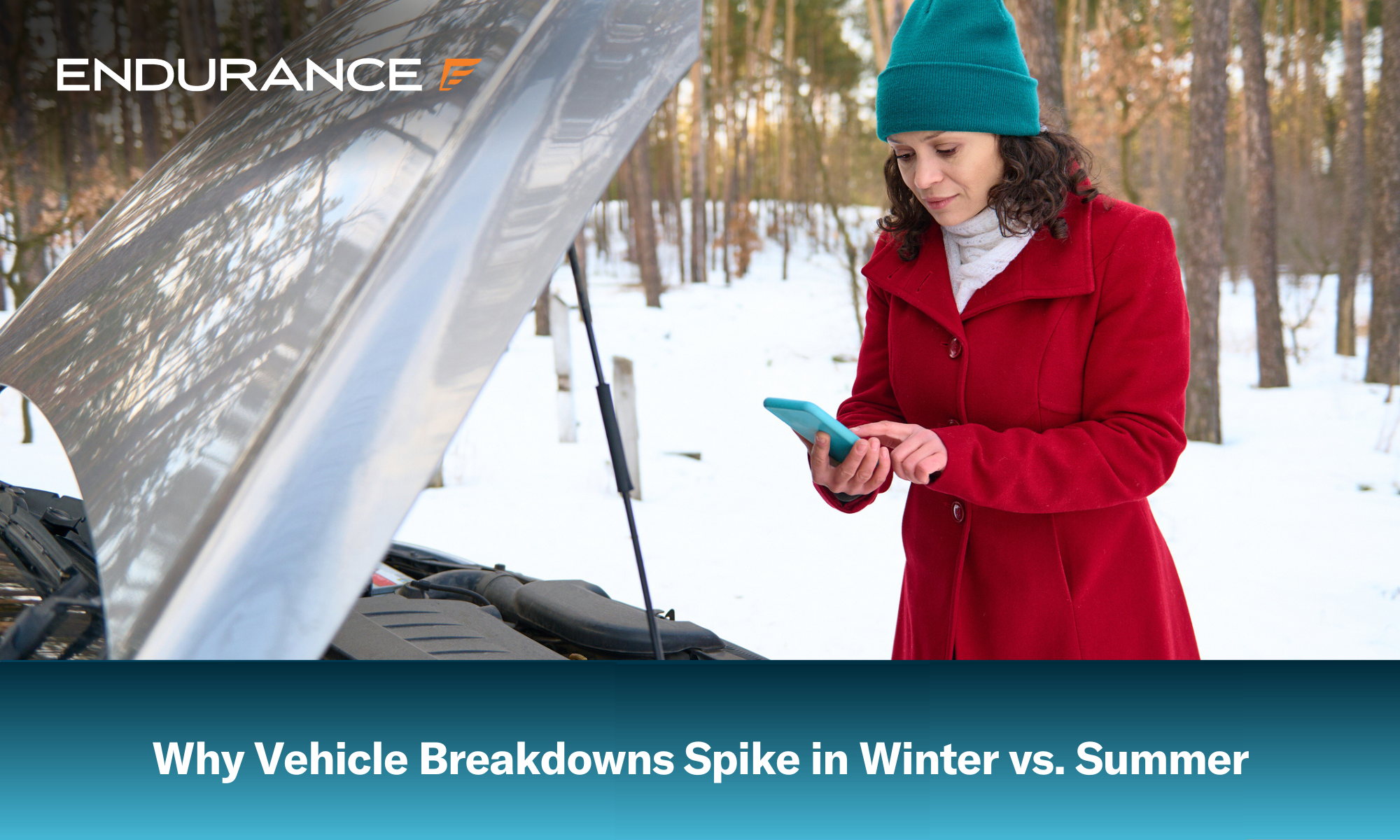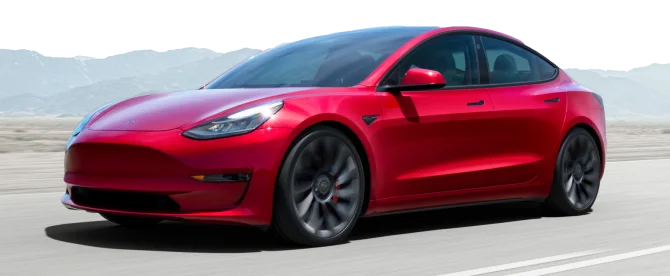Get this deal! Call now.
Speak with a vehicle protection plan specialist and get $300 off any new contract instantly.
Call 866-678-4172
or scan the code below


No matter what kind of weather you are dealing with, a car breakdown can be a major hassle. Getting stranded in the middle of summer or the dead of winter, though, can be all the more stressful and, unfortunately, will be much more common. This is because extreme temperatures can put a massive strain on the components of your vehicle, whether they are hot or cold. Your car’s parts rely on an even, consistent temperature, and if the systems that handle that are overwhelmed by the weather, you are much more likely to experience a breakdown.
Knowing why vehicle problems spike in the winter and the summer and what you can do about them will help you be prepared when the temperatures start to get rough.
Your car’s components are meant to work optimally at a certain temperature. While your engine generates a lot of heat, your cooling system is there to help keep that heat at bay. The cooling system also helps prevent freezing, which can be equally damaging. When the weather gets to a point beyond the usual temperatures, you may find that the cooling system isn’t sufficient and that you are much more likely to develop car problems.
In extreme cold, the antifreeze in the cooling system can become overwhelmed, and you will end up with lower temperatures in the components. This slows down the chemical reactions needed for the battery to work, thickens engine oil and other lubricants, and makes rubber or plastic components brittle and more prone to breaking. In extreme heat, the coolant won’t be able to keep up, and your engine compartment can easily overheat. This increases chemical activity and increases pressure, causing coolant expansion, fuel evaporation, and tire swelling.
In the winter and summer months, it is a good idea to keep an eye out for warning signs that will tell you that your vehicle is having problems in extreme temperatures or needs an auto repair. A slow engine crank is one of the most important things to look out for, as this can be a sign of a dying or dead battery, evaporated gasoline, or deteriorating components. It is also important to watch for vibrations or changes in the way your vehicle handles. This could mean that your tire pressure is either too low or too high due to hotter or colder weather than normal.
No matter what season you are about to go into, there are ways to check over your vehicle and make sure it is in good shape for the coming temperature changes. In the winter, check your battery for corrosion or battery fluid leaks, inspect the tire tread depth and pressure, and check the coolant levels to make sure you have enough antifreeze to prevent serious problems down the line. As the summer approaches, check the function of your air conditioning system, clean or replace the air filters, and top off the coolant. These simple steps can prevent serious problems as you get into the tougher parts of each season.
Being prepared is your best bet when it comes to dealing with vehicle breakdowns during the most extreme times of the year. Whether you are expecting heatwaves or blizzards, an emergency kit can make a big difference when it comes to your safety on the road. The emergency kit in your trunk should include:
Even with preparation, the odds of a breakdown are amplified in the hot and cold weather. This emergency kit can help you navigate a problem and ensure that you come out of it unscathed and safe, no matter what.
When the weather starts working against you and your vehicle, it can be helpful to know what to expect and how to prepare. It is also essential that you have a protection plan in place so you can get the help you need when you need it most. Endurance offers a wide range of auto protect plans (commonly known as extended warranties) for cars and drivers of all kinds, including options for high-mileage vehicles and exotic luxury cars. Endurance will even cover vehicles that other providers won’t, such as Canadian Gray Market cars, vehicles with a salvage or rebuilt title, and cars that are used for commercial purposes like rideshare or delivery.
On top of excellent coverage, Endurance customers also get a variety of extra perks that will be a lifesaver in a mechanical breakdown situation. These include 24/7 roadside assistance, towing service, help with rental cars, and trip interruption protection. For a small activation fee, you can also get access to Endurance’s Elite Benefits, which come with tire repair or replacement, key fob replacement, windshield coverage, and more.
If you want the ultimate protection for yourself and your car when the temperatures rise or fall, get in touch with our plan advisors at (800) 253-8203 for a FREE quote. You can also shop online to see your price and make the right decision for your needs.
For more expert automotive advice, be sure to check out the Endurance Warranty blog. There, you will find helpful car maintenance tips and tricks, provider comparisons, mechanical breakdown insurance information for California residents, and much more.

We've received your vehicle information and will contact you shortly with your quote.
— OR —
Start shopping for a coverage plan now.

We're here to make sure you get the most comprehensive EV protection. That's why we've partnered with Xcelerate Auto to offer you transparent and dependable Tesla coverage.
Want us to contact you about XCare coverage for your Tesla?



Your protection is our top priority. Your quote is in progress and you will
receive a confirmation
email shortly.


Speak with a vehicle protection plan specialist and get $300 off any new contract instantly.

Call for $300 off any new plan!
By clicking the button, you consent to Endurance using automated technology to call, email, and text you using the contact info above, including your wireless number, if provided, regarding auto protection or, in California, mechanical breakdown insurance. You also agree to the Endurance Privacy Policy and Terms and Conditions. Consent is not a condition of purchase, and you can withdraw consent at any time. Message and data rates may apply.


Speak with a vehicle protection plan specialist and get $300 off any new contract instantly.
Call 866-678-4172
or scan the code below



Simply fill out the information below and we will follow up fast with your free no-obligation quote.
By clicking the button, you consent to Endurance using automated technology to call, email, and text you using the contact info above, including your wireless number, if provided, regarding auto protection or, in California, mechanical breakdown insurance. You also agree to the Endurance Privacy Policy and Terms and Conditions. Consent is not a condition of purchase, and you can withdraw consent at any time. Message and data rates may apply.

To speak to a vehicle protection plan specialist and get $300 off any new contract instantly
Scan the code below
Larry Witherspoon Jr. is a co-founder and Executive Director of the Automotive Training Center. Larry has held multiple leadership positions in the U. S. Navy and with various Fortune 100 companies. In addition to his business experience, Larry grew up understanding the difficulties all young men face becoming adults especially those that come from challenging circumstances. He has taken those experiences growing up and combined them with his passion for vehicles to start the Automotive Training Center. Read more about Larry.